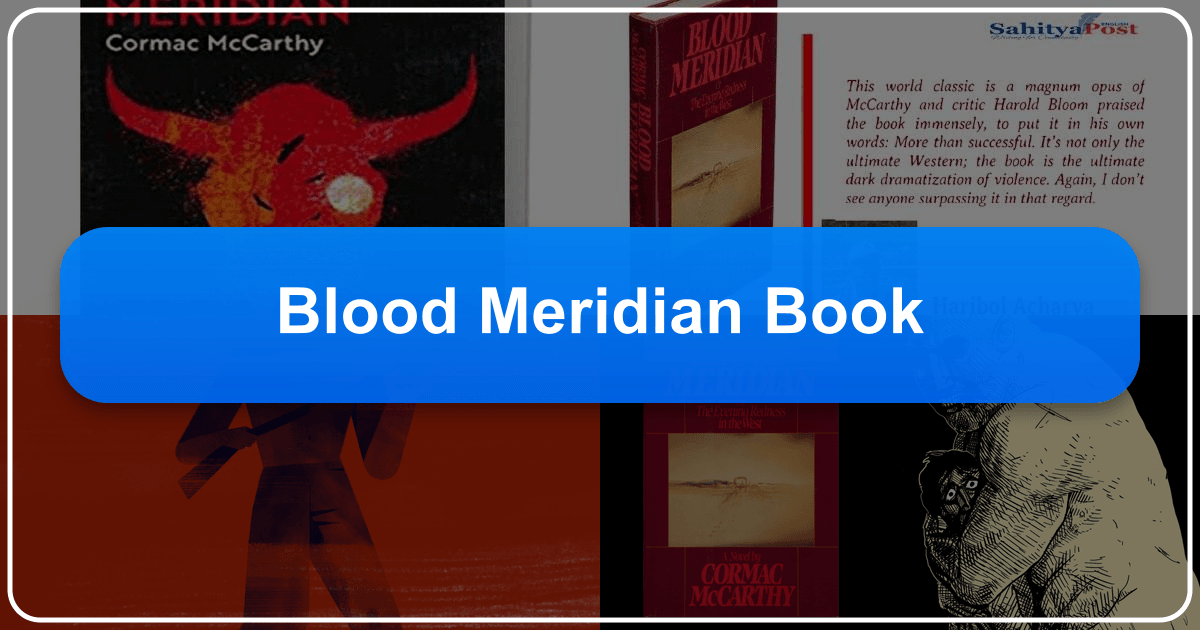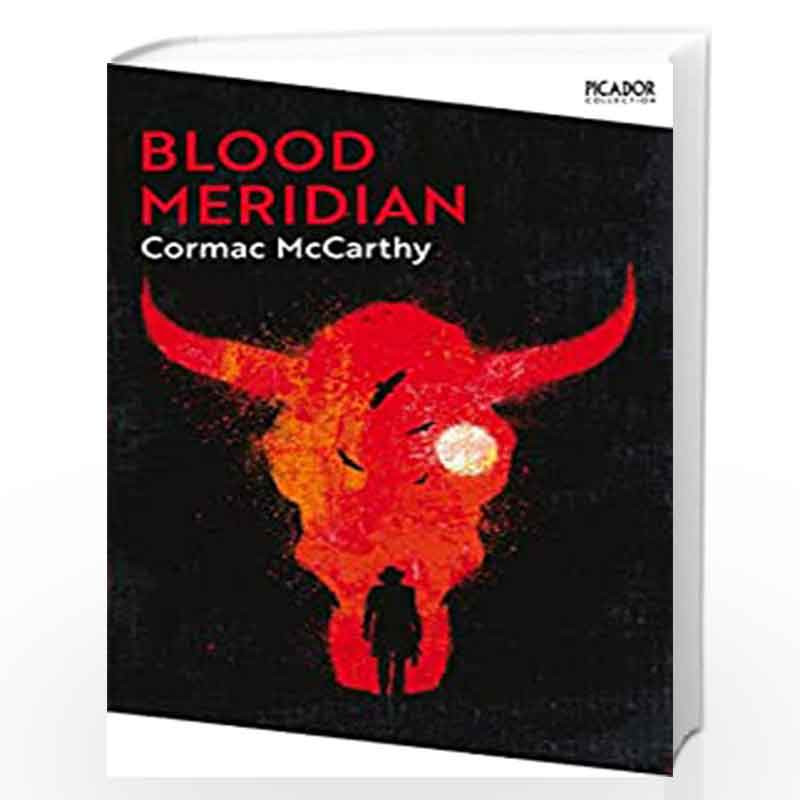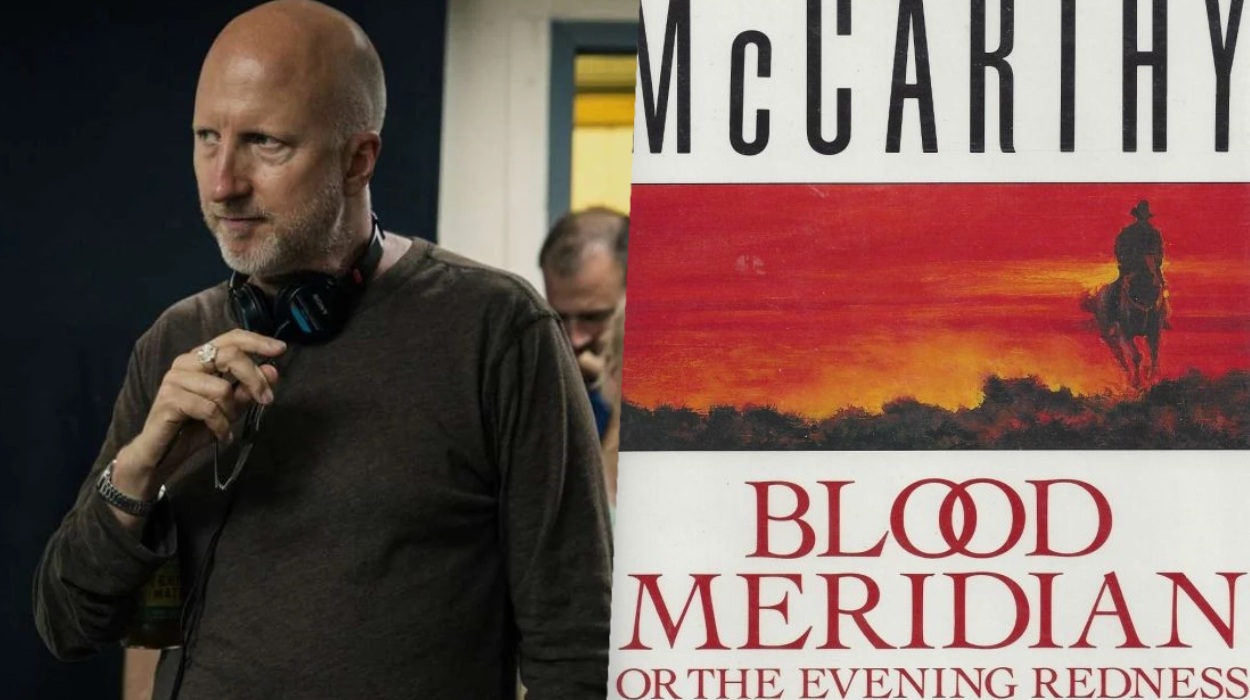Blood Meridian: A Deep Dive into Cormac McCarthy's Masterpiece

Cormac McCarthy’s Blood Meridian stands as a towering achievement in American literature, a brutal and mesmerizing exploration of violence, morality, and the untamed American West. Its unflinching portrayal of the Glanton gang, a group of 19th-century scalp hunters, and the enigmatic Judge Holden has cemented its place as a modern classic, sparking endless critical debate and inspiring numerous attempts at adaptation. This article will delve into the various facets of Blood Meridian, examining its genre, authorship, educational value, cultural impact, and the challenges it presents for interpretation and adaptation.
Genre and Classification

Categorizing Blood Meridian presents a unique challenge. While ostensibly a Western, its subversion of the genre’s conventions earns it the label of “anti-Western”.[2][3] The traditional Western often features a heroic protagonist who tames the wilderness and establishes order. Blood Meridian, however, offers no such hero. Its protagonist, the Kid, is a morally ambiguous figure caught in a vortex of violence, while the true antagonist, Judge Holden, is a terrifying embodiment of nihilistic chaos. The novel’s bleak and violent landscape mirrors the inherent savagery within humanity, shattering the romanticized vision of the Wild West perpetuated in classic Westerns. Beyond the Western genre, elements of historical fiction, gothic fiction, and even philosophical fiction are interwoven into the narrative, creating a complex and multifaceted literary experience. The novel’s epic scope and stark prose further contribute to its unique and challenging identity.

Historical Context and Authenticity
While fictional, Blood Meridian draws heavily upon historical events and figures. The Glanton gang, central to the narrative, is based on the real-life scalp-hunting group led by John Joel Glanton, operating in the American Southwest and Mexico during the 1840s and 1850s. [7] Cormac McCarthy’s meticulous research into this period, including detailed geographical and historical information, lends an unsettling realism to the novel’s already brutal depictions of violence and its implications on the formation of identity.[7] Even the minor details, like the types of weaponry and gunpowder used, are grounded in historical accuracy, further blurring the lines between fiction and reality.
Authorship and Style
Cormac McCarthy’s distinctive writing style is integral to Blood Meridian’s impact. The absence of quotation marks to delineate dialogue, the sparse use of punctuation (notably the absence of semicolons, a choice McCarthy explained in an interview with Oprah Winfrey),[33][34] and the frequent use of archaic and unusual vocabulary contribute to the novel’s unique rhythm and tone. His simple declarative sentences, seemingly devoid of stylistic flourishes, nevertheless possess a powerful, almost poetic quality capable of capturing the enormity of the landscape and the profound depravity of its inhabitants. [35] This Faulknerian prose, as noted by The New York Times,[35] enhances the book’s immersive quality and contributes significantly to its grim atmosphere.

The Creation of Blood Meridian
McCarthy’s creative process for Blood Meridian was as unique as the novel itself. He began working on the manuscript in the mid-1970s,[30] experiencing significant periods of frustration and pauses in the writing. [7] However, large portions of the book, including the famous “legion of horribles” passage, were written in intense bursts of creativity. [7] His research was equally immersive, as he physically retraced the Glanton gang’s route across the Southwest, carefully studying historical records and geographical details to ensure accuracy. His understanding of historical practices, such as gunpowder creation, reflects his attention to historical detail, transforming the work into something remarkably close to a historical account. [31][32] This dedicated research is reflected in the intricate detail of the novel, creating a historically grounded narrative despite its bleak tone and fantastical elements.
Reading and Learning
Blood Meridian offers readers a wealth of intellectual engagement beyond its thrilling, yet disturbing narrative. The book is layered with symbolism, philosophical inquiries, and a wealth of historical details that invite deep consideration. Its exploration of violence, morality, and the nature of humanity elicits varied responses and allows readers to consider profound questions about the human condition.
Educational Value and Life Lessons
The novel’s profound exploration of violence serves not just as sensationalism, but as a vehicle to confront the dark side of human nature. The lack of clear-cut morality and the presence of ambiguous protagonists compels readers to question traditional notions of good and evil, forcing them to engage with the complexities of human behavior. The historical backdrop further provides an opportunity to learn about the often-overlooked brutality of America’s westward expansion, a period in history characterized by widespread violence against Native American populations and other marginalized groups.
Reading Habits and Challenges
Reading Blood Meridian is an immersive yet demanding experience. The novel’s dense prose, unconventional style, and graphic depictions of violence can make it challenging for some readers. The lack of easy answers about the nature of morality, the absence of an easily identifiable hero, and the grimly realistic portrayals of brutality create a unique reading experience that some find demanding, prompting multiple readings and close analysis to properly understand the narrative’s message.
Libraries and Archives
Given its status as a literary masterpiece, Blood Meridian holds a prominent place in numerous libraries and archives. Public libraries worldwide include it in their collections, making it readily accessible to a wide readership. Digital libraries, like those provided by Lbibinders.org, also offer convenient access to the text. Furthermore, the novel’s historical significance and unique literary style make it a valuable addition to rare collections and specialized archives focused on American literature, the Western genre, and 19th-century history.
Cultural Impact and Legacy
Blood Meridian’s impact extends far beyond the realm of literature. Its themes have resonated across various artistic mediums, influencing filmmakers, musicians, and artists. The novel’s enduring popularity is a testament to its powerful exploration of fundamental human questions, its literary mastery, and its ability to provoke intense emotional and intellectual responses from readers.
Literary Influence and Adaptations
Blood Meridian has significantly impacted contemporary literature, influencing numerous authors and inspiring critical analysis. Its unique stylistic choices, such as the use of terse sentences and unconventional punctuation, are discussed and emulated, even as the novel’s moral ambiguities and depiction of violence generate debate and academic work. Despite being called “unfilmable” due to its extreme violence,[46] numerous attempts have been made to adapt the novel into a film. [47]-[57] These adaptations reflect the novel’s continued cultural impact and the lasting interest in bringing McCarthy’s vision to the screen, a goal the author himself felt was achievable, despite the inherent difficulties. This reflects Blood Meridian’s status as a challenging yet iconic work of art, one which transcends its historical setting to speak to universal aspects of human experience and our relationship to conflict.
Awards and Recognition
While initially met with a lukewarm reception, Blood Meridian has since garnered widespread critical acclaim, establishing it as a landmark achievement in American literature. While it did not receive major awards during its initial release,[4] the novel has since been praised by leading literary critics like Harold Bloom,[8][9][10] Aleksandar Hemon,[37] and David Foster Wallace,[38][39] its presence in numerous “best of” lists, such as Time’s “Time 100 Best English-language Novels,"[40] further cementing its position as a significant contribution to American literary history. This recognition, spanning decades and multiple critical perspectives, underlines its cultural influence and enduring importance.
Communities and Discussions
Blood Meridian continues to generate lively discussions among readers and critics alike. Online forums and academic publications are filled with interpretations and analyses of the novel’s complex themes and symbolism. The book’s open-ended nature and lack of simple moral conclusions guarantee continued engagement and passionate debates among its readers. This continuous interpretation ensures its relevance and its place in the ongoing conversation surrounding violence, morality, and the human experience. The complex themes embedded within the novel’s narrative guarantee its continued study and interpretation, establishing it as not simply a book, but a vital cultural text.